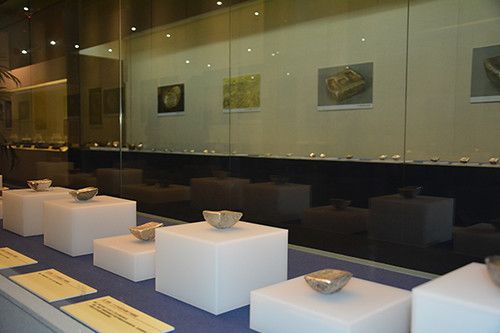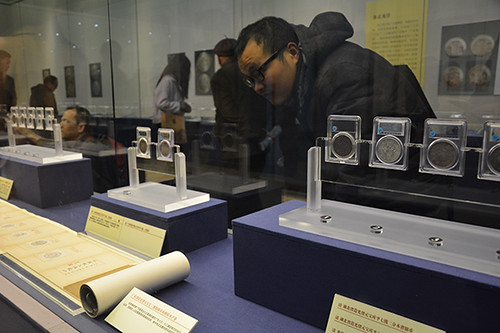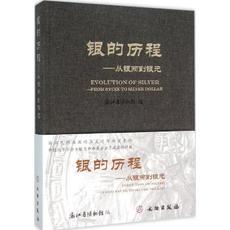
PREV ARTICLE
NEXT ARTICLE
FULL ISSUE
PREV FULL ISSUE
NEW BOOK: EVOLUTION OF SILVERHelen Wang, Curator of East Asian Money, The British Museum publishes the Chinese Money Matters blog. In a recent post she examines the catlaog of a recent numismatic exhibit
in China. -Editor
EVOLUTION OF SILVER – FROM SYCEE TO SILVER DOLLAR
Catalogue: 2016。ISBN 978-7-5010-4491-7 [Zhejiang Provincial Museum (ed.): Evolution of Silver – from Sycee to Silver Dollar (Beijing: Wenwu chubanshe, 2016)] The following information is taken from the Zhejiang Provincial Museum website: The earliest silver money in China found through archaeological excavation is from the Warring States period 2000 years ago – imitation cowrie shells made of silver, and silver spade money very similar to hollow handle spade money. In the Tang dynasty there were silver bars (银铤 yinting) and cakes (银饼 yinbing), but limited use of silver as money. In the Song and Jin dynasties, silver and gold money became widespread, and a particular form developed, more or less rectangular, with a large top, a small base, and which narrowed at the waist. This shape continued into the Yuan dynasty. In the Ming dynasty, silver was in common use, and a variety of shapes emerged. In the Qing dynasty, silver ingots continued to be made in a variety of shapes. The influx of foreign silver coins prompted suggestions for a currency reform, to put Chinese silver coins into circulation alongside the foreign coins. In 1887 Zhang Zhidong 张之洞, governor of Guangdong and Guangxi provinces, proposed that a mint be established in Guangzhou (Canton), and purchased minting machinery from Heaton, in Birmingham, UK. In 1890, the Canton Mint issued silver coins, marking the beginning of the move to machine-struck silver coins in China. The following photographs of the exhibition are taken from the Zhejiang Provincial Museum   To read the complete article, see:
 Wayne Homren, Editor The Numismatic Bibliomania Society is a non-profit organization promoting numismatic literature. See our web site at coinbooks.org. To submit items for publication in The E-Sylum, write to the Editor at this address: whomren@gmail.com To subscribe go to: https://my.binhost.com/lists/listinfo/esylum All Rights Reserved. NBS Home Page Contact the NBS webmaster 
|
